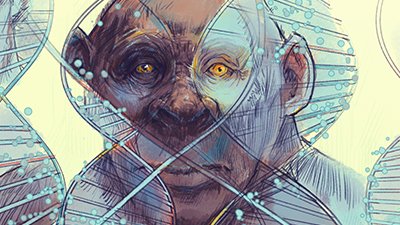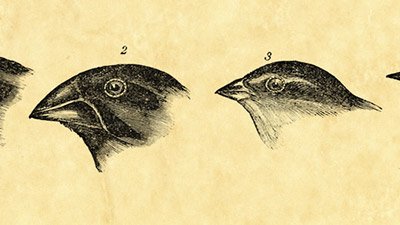
News that Proves Evolution?
It’s the news that, in the mind of one of our critics, “proved” evolution.
News Source
- New York Times: “From Single Cells, a Vast Kingdom Arose”
The story begins with the discovery of the “amoebalike” Capsaspora owczarzaki living inside snails. Strange enough, that obscure microorganism is “one of the closest relatives to animals,” the Times declares as a starting point for discussing the supposed evolutionary transition of such unicellular creatures to animal life. But what the Times explains next is anything but a “proof” of evolution:
The article goes on to explain several lines of evolutionary research investigating the connection between single-celled life and animals, including a DNA study said to have shown that “[t]he cousins of animals turn out to be a motley crew.” So what’s the evidence supporting an evolutionary origin of animals?
- First, “[p]rimitive multicellularity may have been fairly easy to evolve,” the story asserts, quoting a scientist who notes that “[a]ll that has to happen is that the products of cell division stick together” and division of labor can begin. But no evidence is provided to back up the historicity of this just-so story. Furthermore, cells sticking together risk a host of problems when individual cells “become renegades.” But in explaining how animals acquired defenses against such renegade cells, scientists presuppose evolution, pointing to algae that “have evolved” appropriate defenses.
- Second, we read that researchers have discovered “a wealth of genes that were once thought to exist only in animals” inside of single-celled creatures, including a gene in Capsaspora that’s similar to a gene important in animals’ embryonic development. But, again, that finding doesn’t prove evolution; it only shows that even relatively “simple” life-forms include highly complex genetic programming. While the Times declares that “[o]ld genes began to take on new functions, like producing the glue for sticking cells together and guarding against runaway cells that could become tumors,” we once again have no direct evidence for that just-so story.
- Third, the article refers to research we discussed last August, in which a team claimed to discover the “oldest animal fossils yet found”: sponge-like creatures from a supposed 650 million years ago. (The Times does not report criticism of the team’s findings; we did.) The story also reports that another team drilled into what were considered 635-million-year-old (or more) oil deposits and found “cholesterol-like molecules that are produced today only by one group of sponges”; we would obviously disagree with that dating and conclude that the molecules really were produced by sponges similar to the ones we find today! Meanwhile, a genetic study of sponges showed 1,268 gene families shared by all animals but not by other species, which the Times is forced to conclude “were presumably passed down to living animals from a common ancestor that lived 800 million years ago.” Another just-so story, despite the fact that the article quotes a scientist who speaks as if he had seen the creature: “It wasn’t just an amorphous blob of cells” but one that (in the reporter’s words) “was already setting aside eggs and sperm[,] could produce embryos, and it could lay down complicated patterns in its body.”
Researchers also haven’t yet found an explanation for “another source of innovation” animals have called microRNA, which helps regulate genes and has not been found in what the Times calls “single-celled relatives of animals.” MicroRNAs are more frequent in animals with more cell types; sponges have just 8, while humans have 677.
The “evidence” of evolution is almost entirely evidence of similarity across forms of life—often with the help of an old-earth interpretation of the fossil record.
To us, the case for Darwinian evolution is weaker than ever. The more scientists are able to research the inner workings of life, the more two things become obvious. First, life is incredibly complicated, even in the simplest cell; evolutionists’ explanations for the origin of that complexity continue to be little more than hand-waving and just-so stories. Second, however sophisticated our inner biology is, there is no evidence that over time and generations cells can make themselves more complex except in ways already coded for genetically. Both of these evidences are far more consistent with special creation than with Darwinian evolution. At the same time, the “evidence” of evolution is almost entirely evidence of similarity across forms of life—often with the help of an old-earth interpretation of the fossil record. But the old-earth interpretation is based on unprovable assumptions, and the similarity evolutionists see can be explained with common design just as well (if not better) than as with common descent. Until evolutionists recognize these arguments, their “proofs” of evolution will continue to fall short of convincing creationists—or anyone paying close attention to their claims.
For More Information: Get Answers
Remember, if you see a news story that might merit some attention, let us know about it! (Note: if the story originates from the Associated Press, FOX News, MSNBC, the New York Times, or another major national media outlet, we will most likely have already heard about it.) And thanks to all of our readers who have submitted great news tips to us. If you didn’t catch all the latest News to Know, why not take a look to see what you’ve missed?
(Please note that links will take you directly to the source. Answers in Genesis is not responsible for content on the websites to which we refer. For more information, please see our Privacy Policy.)
Recommended Resources

Answers in Genesis is an apologetics ministry, dedicated to helping Christians defend their faith and proclaim the good news of Jesus Christ.
- Customer Service 800.778.3390
- © 2024 Answers in Genesis






